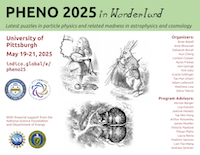Speaker
Description
Recently, the James Webb Space Telescope (JWST) has found early galaxies producing photons from more efficient ionization than previously assumed. This may suggest a reionization process with a larger reionization optical depth, $\tau_{reio}$, in some mild disagreement with that inferred from measurements of cosmic microwave background (CMB). Intriguingly, the CMB would prefer larger values of $\tau_{reio}$, more consistent with the recent JWST hint, if the large-scale measurements (i.e. $\ell <30$) of E-mode polarization are removed. In addition, $\tau_{reio}$ has an indirect correlation with today's Hubble constant $H_0$ in $\Lambda$CDM. Motivated by these interesting observations, we investigate and reveal the underlying mechanism for this correlation, using the CMB dataset without the low-$\ell$ polarization data as a proxy for a potential cosmology with a larger $\tau_{reio}$. We further explore how this correlation may impact the Hubble tension between early and late universe measurements of $H_0$, in $\Lambda$CDM as well as two proposals to alleviate the Hubble tension: the dark radiation (DR) and early dark energy (EDE) models. We find that the Hubble tension gets further reduced mildly for almost all cases due to the larger $\tau_{reio}$ and its positive correlation with $H_0$, with either the Baryon Acoustic Oscillations (BAO) data before those from the Dark Energy
Spectroscopic Instrument (DESI) or the DESI data.

